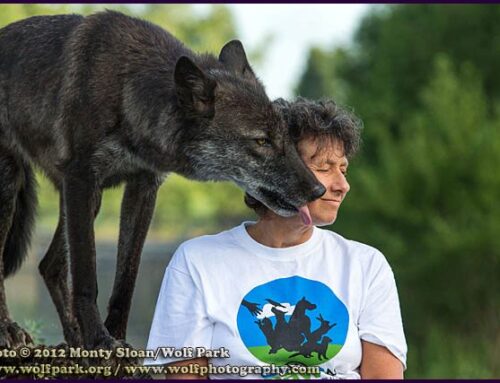In Costa Rica there is a saying; ‘Poco a poco la hormiga se come el coco’- bit by bit the ant eats the coconut. I use it often in relation to my fearful dog Sunny.
In November Sunny will have been with us for 6 years. He’s not the same dog he was when he first arrived but no one would have any trouble identifying him as fearful of people, unless they only watched him interact with me or someone tossing a frisbee. Sunny is also easily startled; a book sitting outdoors on a table its pages flipping in the wind, a drawer opening or closing, plates settling in a dish rack, the sudden movement of a rocking chair, all cause him to duck his head, pull his ears back and RUN AWAY! But, bit by bit, I have noticed changes in his behavior. Used to be Sunny could not stay in the same room with me while I folded laundry (fortunately for him I’m not big on folding laundry so its not a daily occurrence), each article of clothing pulled from the basket was a source of concern and early on- horror (not a statement on my fashion sense!).
Lately I’ve noticed he’s less worried. The past few weeks he’s been spending more time in the kitchen/living room area with me and other dogs as I prepare their meals. Sudden changes in his environment will still cause him to startle, but often he doesn’t run away. He’s routinely coming inside the house through a door that he avoided, instead of heading to his usual entrance around the house via the deck. That he came in through that door when my husband was in the house was worth noting. After 6 years Sunny remains afraid of him.
Over the years I’ve had people, some well-intentioned, others not so much, offer me advice or criticism, inferring or outright blaming me for Sunny’s behavior. Early on I had my doubts; was I doing the right thing by Sunny? But years of living with him, studying behavior, brains and most specifically, fear, I harbor fewer doubts that the recommendations I had been given were wrong. Most included some form of ‘make him’. Make him walk with you, make him follow you around the house, make him be near your husband. I assume that this technique worked for the suppliers of the advice, but whether they are unable to accurately read their dogs and so are misinterpreting the results, or were handling a dog without the same depth of a problem as my dog, I won’t know. What I do know is that my dog did not have the skills or ability to deal with the things that scared him and come out better for it. For six years I have worked on giving him those skills and as his trust in me has increased (I’ve become predictable to him) I’ve been able to ‘ask’ him to do things that he might not have chosen to do on his own, but together he’s successful.
Dogs do not ever ‘forget’ that something scared them. It doesn’t make any sense to forget that something was once perceived as dangerous. That rustling in the grass may not have been a lion this time, but the animal that gets to breed probably doesn’t ever become laissez faire about it. Even if no physical harm ever comes to a dog the emotional response of fear to a trigger is ‘real’ enough evidence that something is dangerous. We often talk about ‘trusting our gut’ when we’re not sure about how to respond to something. Dogs trust their guts.
This doesn’t mean we can’t change a dog’s behavior, we can, but it takes time and patience. The rate at which a dog is able to change will be unique to them and their particular blend of biology and experience. As our dogs learn new skills and behaviors, so do we. We are also nibbling away at that coconut as we learn about being better trainers and bite off another chunk that teaches us something about compassion. 






